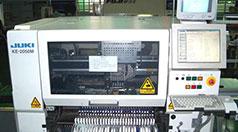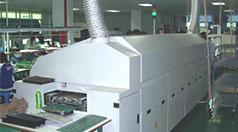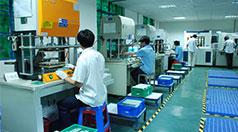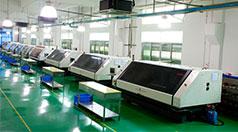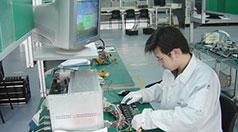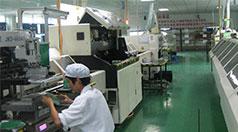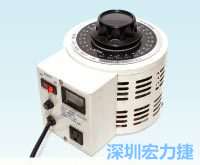
What is the function of power supply?
The AC-DC power supply can convert alternating current (AC) into direct current (DC) for general electrical appliances, and the voltage available after conversion is usually low. Therefore, although the name is the "power supply" , in fact, the device itselfstill need an external power supply.
Usually, a large appliance such as a computer or audio has a power supply, so the plug can be directly plugged into a wall socket; while a small appliance such as a mobile phone or other multimedia device that uses a battery which often requires an external type. Power supply,which is usually installed in a plastic box, and connected by wires to be inserted into the socket. The converted DC power is sent through the connector at the other end. While the external power supply is usually called the transformer.
Although the AC-DC power supply is not a single component, it is usually sold as an assembled module.
How many types of power supply?
There are two main types of power supply, linear and switched power supplies.
1.Linear Regulated Power Supply
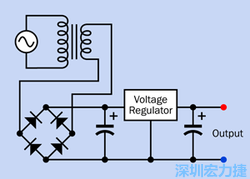
The operation of a linear power supply is divided into three phases:
First, The power converter converts the input AC power into a low voltage one.
Second, the rectifier converts the alternating current into unflattened direct current.
Third, the voltage regulator is matched with one to several capacitors to control the DC voltage, level the voltage, and remove the transient current. This kind of voltage regulator is called a linear voltage regulator because it contains one to several transistors and its mode of action is linear. That is to say, within the saturation level, linear adjustment is made according to the amplitude of the current fluctuation. The device is named for this linear voltage regulator.
This type of power supply is associated with a power converter because the power supply reduces the input AC voltage through the regulator before rectification.
Because the rectifier in the power supply usually sends each AC pulse through a pair of silicon diodes, it will cause a voltage drop of 1.2V at the peak of the current; and the capacitor for rectification will reduce the voltage by 3V. The voltage regulator typically requires a potential difference of at least 2V between the input and output. In addition, the input AC voltage is floating and may swing to a lower than the specification. Therefore, the output of the transformer is at least 8V higher than the required voltage. The excess energy is lost in the form of heat.
The concept of a linear power supply comes from devices such as early radio wave receivers, which have been widely used until the 1990s. Later, switching power supplies became more popular because of the reduced cost of semiconductor manufacturing assembly and the advent of high-voltage transistors, allowing us to directly use the rectified line voltage without the need for hierarchical voltage conversion.
Some external transformers also include a power converter, but the ratio has been reduced a lot. This type of transformer will be larger and heavier. The right picture shows a transformer like this: an old-fashioned, inexpensive transformer with only the most basic parts and no stable DC power required for electronics. .
2.Switching Power Supply
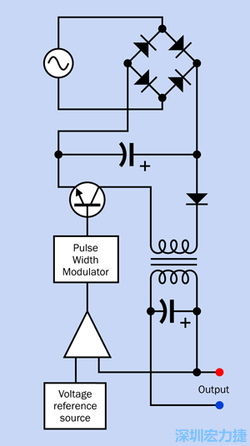
Also known as a switched-mode power supply (SMPS), the operation of a switched-mode power supply is divided into two phases.
First, the rectifier will first convert the input AC power into unflattened DC power, without passing through the power converter.
Second, the DC-DC converter will switch the DC power at a very high frequency, and reduce the average effective voltage by pulse width modulation. Usually, a flyback converter is used, which includes a converter, but high frequency. Switching eliminates the need for a power converter like the one in a linear power supply. For details on the operation of the DC-DC converter, please refer to the relevant section of the Encyclopedia of Electronic Components.
The figure above shows how the switching power supply is represented on the circuit diagram. This is a simplified diagram that only shows the main components of the switched power supply. If you look closely, you will find that the 115V power converter is missing from the figure. This is because the converter has been integrated into the high-frequency switching line, which will make it smaller, lighter and cheaper.


